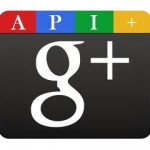 Mountain View, California — Global search and advertising giant Google in its endeavor to serve its international community from every walk of life, has just announced on its blog that it has made its Docs, Sites and Calendar services friendlier for the visually impaired by enhancing their accessibility features.
Mountain View, California — Global search and advertising giant Google in its endeavor to serve its international community from every walk of life, has just announced on its blog that it has made its Docs, Sites and Calendar services friendlier for the visually impaired by enhancing their accessibility features.
Earlier this week, Google unfurled some improvements to its Hangouts feature in Google+, specifically in terms of accessibility and sign language. They improved video quality and made it so it is easier to see signing. And now, the company has also been working on some other accessibility-related features for Google Docs and Google Calendar.

Image Credit: (WebProNews.com)
“This fall, as classrooms fill with the hustle and bustle of a new semester, more students than ever will adopt Google Apps to take quizzes, write essays and talk to classmates,” says Google Accessibility technical lead T.V. Raman.
The search engine titan said that its Google Docs, Google Sites, and Google Calendar offerings now have enhanced support for screen readers (JAWS, ChromeVox and VoiceOver (Calendar only)). Users can now utilize screen readers to help them read, browse, edit and create documents and events.
“Yet blind students (like blind people of all ages) face a unique set of challenges on the web. Members of the blind community rely on screen readers to tell them verbally what appears on the screen. They also use keyboard shortcuts to do things that would otherwise be accomplished with a mouse, such as opening a file or highlighting text,” Raman added.
In addition to delivering enhanced support for screen readers, Google has also executed additional shortcut keys to help blind people use their services more efficiently.
“While our work is not finished, we have now significantly improved keyboard shortcuts and support for screen readers in several Google applications, including Google Docs, Google Sites and Google Calendar,” Raman wrote in a blog post.
Raman also said the updates are the result of cooperation with advocacy organizations for the blind to make its offerings more accessibility improvements. On the Gmail Blog, the company offers some guidelines on how screen readers and keyboard shortcuts have been improved specifically in Google Calendar:
-
In your calendar lists, you can use the up and down arrow keys to navigate between your calendars. For each calendar in the list, you’ll hear its name and can use the spacebar to turn the calendar on or off. To remove a calendar from the list, use the delete key.
-
In the agenda view, you can use the up and down arrow keys to move between events and use the left and right arrow keys to move between dates. To expand an event and expose the event details, press enter. To go to the event details page, type ‘e’. To remove an event, press delete. Although agenda view provides the best screen reader experience today, we are also working on improved accessibility for other views.
-
In the guest list on the create/edit event page, you can navigate around using the up and down arrow keys. Use the spacebar to switch a guest’s status between optional and required. To remove a guest from the list, use the delete key.
-
Additional keyboard shortcuts make it easier to use Google Calendar no matter which view or screen you’re on. Type ‘c’ to create an event, ‘/’ to start a search, and ‘+’ to add a calendar.
In the weeks and months ahead, we will continue to enrich our products for blind users. We believe that people who solely depend on assistive technologies deserve as rich and as productive an experience on the web as sighted users, and we are working to help that become a reality, added Raman.
However, for those interested in grasping more information, Google has scheduled a “webinar” (web seminar) on the improvised accessibility features on September 21, from 12:00 to 1:00 p.m. Pacific Time.
It is not that we routinely hear about such enhancements being made to help out the visually impaired, so kudos to Google for making the effort. For a complete list of shortcuts and more information about screen reader functionality, you can find more info in Google’s help center.


